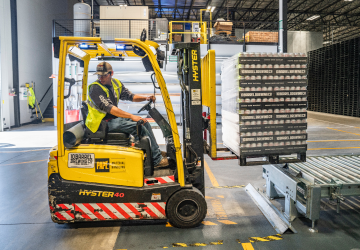In the dynamic world of e-commerce, efficient inventory management is the backbone of a successful Amazon Fulfillment operation. As an Amazon seller, you know that the ebb and flow of inventory can make or break your business. Picture a well-organized warehouse, items flowing seamlessly in and out, and customers receiving their orders promptly. Sounds like a dream, right? Well, it’s closer to reality than you might think. In this blog post, we’re delving into the heart of inventory management, focusing on two pivotal indicators that can transform your Amazon Fulfillment warehouse into a model of efficiency. Get ready to optimize your operations and elevate your Amazon business to new heights.
Inventory Turnover
What is Inventory Turnover?
Inventory turnover, often referred to as stock turnover, is a critical metric that every Amazon seller should have at their fingertips. Essentially, it measures how quickly you sell through your inventory and restock your warehouse. A high inventory turnover rate indicates that you’re selling your products swiftly, while a low rate suggests that items are languishing on the shelves, tying up valuable resources.
Why is Inventory Turnover Crucial?
A high inventory turnover rate translates to more cash flow and less money tied up in unsold inventory. It minimizes the risk of products becoming outdated or obsolete and allows you to allocate your capital more efficiently. By closely monitoring this metric, you can strike a balance between meeting customer demand and avoiding overstock situations.
Order-to-Shelf Time
The Significance of Order-to-Shelf Time
Order-to-Shelf Time, a lesser-known but equally vital indicator, measures how quickly products move from receiving to the shelves where they await fulfillment. This metric focuses on the internal processes of your warehouse and their impact on order fulfillment speed.
Strategies for Reducing Order-to-Shelf Time
Reducing Order-to-Shelf Time requires meticulous planning, streamlined workflows, and effective communication among your warehouse team. Implementing strategies like cross-docking, batch picking, and optimized warehouse layouts can significantly expedite the movement of inventory.
Efficient inventory management is a cornerstone of a prosperous Amazon Fulfillment business. By keeping a close eye on key indicators like Inventory Turnover and Order-to-Shelf Time, you can fine-tune your operations and enhance customer satisfaction. Remember, the e-commerce landscape is ever-evolving, and your ability to adapt and optimize your warehouse processes will be a game-changer. So, take these insights, put them into action, and witness your Amazon Fulfillment warehouse become a beacon of efficiency, propelling your business to new levels of success.

